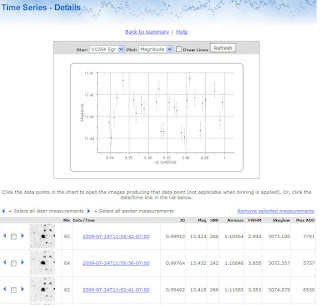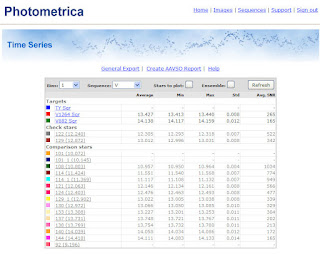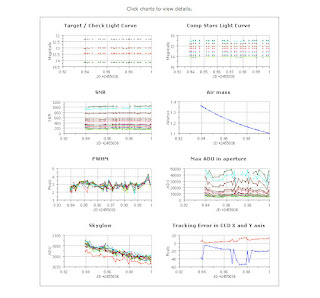
The American Association of Variable Star Observers AAVSO has a large membership of skilled amateurs, great resources, extensive observation records and a great system for marshalling the variable star observers in the objective of creating light curve "memory" for others to build research upon.
Only this week an alert went out to the membership asking for urgent observations on variable star V2105 OPH. Dr Brian Espey from Trinity College Dublin, is anxiously awaiting a window on the Hubble Space Telescope to perform Ultraviolet Spectroscopy.
CCD cameras gather light based on their ADU count and the Quantum Efficiency of the Camera. In order to do accurate photometery you need to carefully select the durationof your exposures to make sure you don't saturate the star, as this destroys the Signal to noise ratio and distorts the ADU count. I don't have any experience in Spectroscopy but I imagine you would have to be just as careful. That's why if you are fortunate enough to be using the Hubble.....you probably don't want any surprises. An appeal to the amateur community therefore becomes essential to help the Scientist prepare for their observation session appropriately.
Variable star observers range from people with good eyesight and a knowledge of the nearby stars (derived from AAVSO's excellent maps and records) through to binocular observers and others with more powerful telescopes, CCD cameras, PEP devices and sophisticated software packages. The process involves determining the Magnitude of a star by comparing its brightness with nearby stars of a known magnitude. Observers then report this magnitude and the data is added to the database for that star.
Dr Espey was able to receive 7 observations with in the first 36 hours by keen amateurs and members of the AAVSO.
Once you gain the basic skills, you can further your skills with increasingy sophisticated tools.
Why do we do it?
Good question, for me the satisfaction of making a measurement and putting it into the database and having someone else on the other side of the world make the same observation and record the same measurement to a high degree of accuracy and precision is amazing and very satisfying. In science it is important to measure accurately, but the ultimate test is having results confirmed by others - ie reproducable data.
Here are some of the recent observations and the tool photometrica that I use to process my results.

The AAVSO report follows a set format (Abreviated below) and contains the measured magnitude and the magnitudes of nearby Check and Comparison stars as well.
#NAME,DATE,MAG,MERR,FILT,TRANS,MTYPE,CNAME,CMAG,KNAME,KMAG,AMASS,GROUP,CHART,NOTES
TY Sgr,2455049.90881,9.626,0.002,V,NO,ABS,ENSEMBLE,na,CD-24 15162,10.414,1.33521,na,090825
A tool such as Photometrica can help you process and format the data, if you are plotting your own light curves.

So join the AAVSO today, learn some new skills, and do some real science!!!


Nice piece. Sorry I missed your call last week. Cheers,
ReplyDeleteMike Simonsen
Very nice piece. I use and love photometrica too because I came to Astronomy with very little scientific background, and no resources or ability to observe visually or with my own equipment. Photometrica allows me to seamless report to AAVSO observations to I make using robotic obsersavaties, (Global-Rent-A-Scope), without having to have gone up a very steep learning curve to do more training than I could have managed at the beginning in photometry. It's very user and beginner friendly.
ReplyDelete